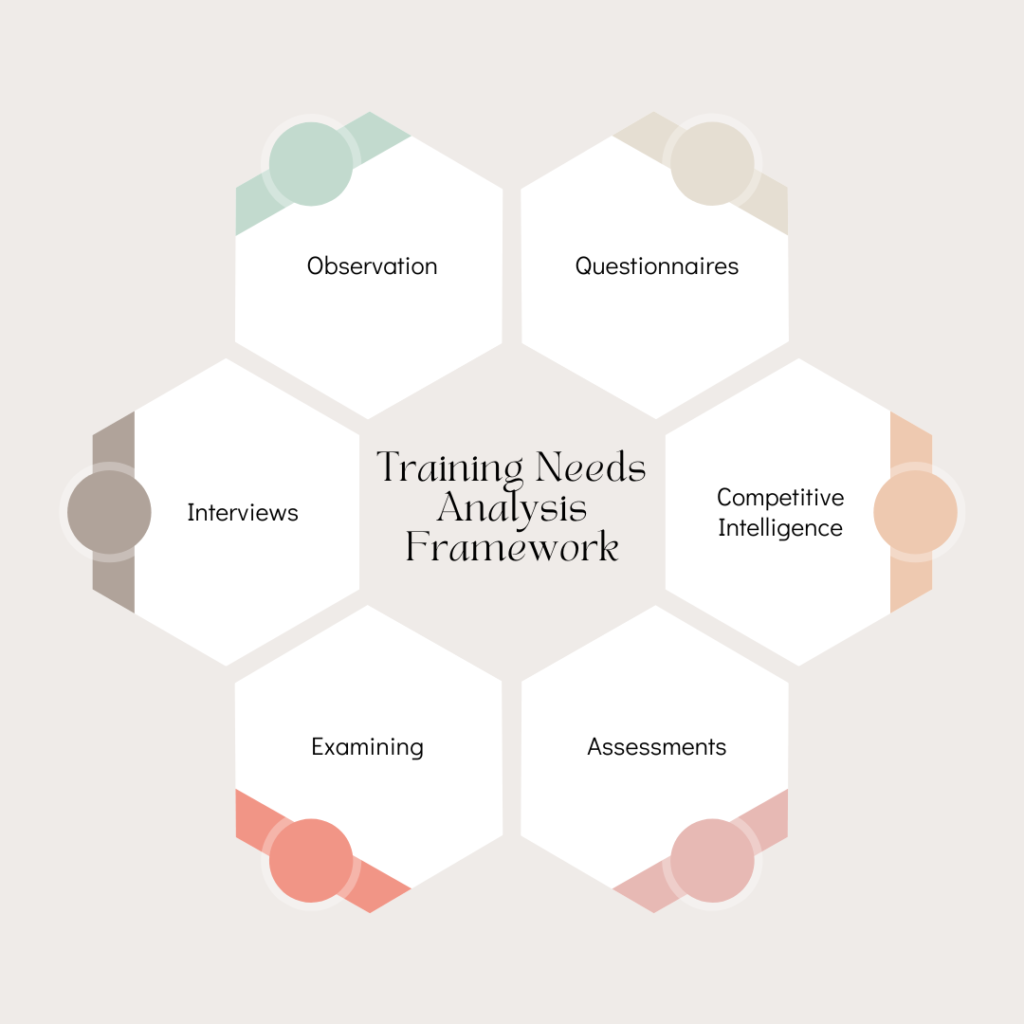Training Needs Analysis (TNA) is the process of identifying the gaps between the current and desired skills, knowledge, and competencies of employees in an organization. Once the training needs have been identified, appropriate Corporate Training Courses can be designed and implemented to bridge those gaps.
Using a framework based systematic approach to identify the training needs of employees can be used to develop and implement effective training programs.
Training Needs Analysis Framework is most likely to consist: questionnaires, observation, interviews, examining work, assessments, and competitive intelligence. Each component plays a critical role in understanding the training needs of employees.

Questionnaires
Questionnaires are a commonly used tool in the Training Needs Analysis Framework. Questionnaires are an effective way of gathering quantitative data from a large number of employees. The questionnaires can be used to assess employees’ current knowledge and skills, as well as their training needs. The questions can be designed to target specific areas of knowledge or skills, and the responses can be analyzed to identify areas where training is needed.
Observation
Observation is another component of the Training Needs Analysis Framework. Observation involves observing employees’ behavior and performance on the job. This can be done by supervisors, managers, or other employees. Observations can provide valuable information on areas where employees may need training. For example, if an employee struggles with a particular task, it may be an indication that they need more training in that area.
Interviews
Interviews are another essential component of the Training Needs Analysis Framework. Interviews can be used to gather qualitative data from employees. The interviews can be conducted by managers, supervisors, or other employees. The interviews can provide valuable insights into employees’ perceptions of their training needs, as well as their strengths and weaknesses. The interviews can be structured or unstructured, depending on the goals of the analysis.
Examining
Examining work is another component of the Training Needs Analysis Framework. Examining work involves reviewing the tasks and responsibilities of employees. This can be done by managers or supervisors. The examination can provide valuable information on areas where employees may need training. For example, if an employee is responsible for a new task, they may need training on how to perform that task.
Assessments
Assessments are another component of the Training Needs Analysis Framework. Assessments can be used to evaluate employees’ knowledge and skills. The assessments can be designed to target specific areas of knowledge or skills. The results of the assessments can be used to identify areas where training is needed.
Competitive Intelligence
By conducting competitive intelligence research, organizations can identify areas where their competitors excel in training and development, and where they may be falling behind. This information can be used to inform the design and implementation of training programs that are tailored to the needs of the organization and its employees.

Final Words
In conclusion, the Training Needs Analysis Framework is a critical tool for any organization that aims to improve its workforce’s knowledge and skills. It provides a systematic approach to identify the training needs of employees. By understanding the training needs of employees, organizations can develop and implement effective training programs that improve employee performance and productivity. So, it’s essential to prioritize training needs analysis in any organization to foster a culture of holistic learning and development. Training Needs Analysis helps to identify the gaps in a trainer’s skills and knowledge, which can be addressed through Train the Trainer programs.





Leave a Reply